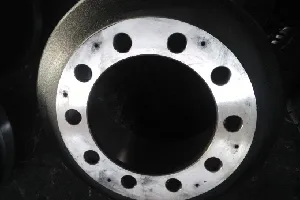
-
 Afrikaans
Afrikaans -
 Albanian
Albanian -
 Amharic
Amharic -
 Arabic
Arabic -
 Armenian
Armenian -
 Azerbaijani
Azerbaijani -
 Basque
Basque -
 Belarusian
Belarusian -
 Bengali
Bengali -
 Bosnian
Bosnian -
 Bulgarian
Bulgarian -
 Catalan
Catalan -
 Cebuano
Cebuano -
 Corsican
Corsican -
 Croatian
Croatian -
 Czech
Czech -
 Danish
Danish -
 Dutch
Dutch -
 Ingarihi
Ingarihi -
 Esperanto
Esperanto -
 Estonian
Estonian -
 Finnish
Finnish -
 French
French -
 Frisian
Frisian -
 Galician
Galician -
 Georgian
Georgian -
 German
German -
 Greek
Greek -
 Gujarati
Gujarati -
 Haitian Creole
Haitian Creole -
 hausa
hausa -
 hawaiian
hawaiian -
 Hebrew
Hebrew -
 Hindi
Hindi -
 Miao
Miao -
 Hungarian
Hungarian -
 Icelandic
Icelandic -
 igbo
igbo -
 Indonesian
Indonesian -
 irish
irish -
 Italian
Italian -
 Japanese
Japanese -
 Javanese
Javanese -
 Kannada
Kannada -
 kazakh
kazakh -
 Khmer
Khmer -
 Rwandese
Rwandese -
 Korean
Korean -
 Kurdish
Kurdish -
 Kyrgyz
Kyrgyz -
 Lao
Lao -
 Latin
Latin -
 Latvian
Latvian -
 Lithuanian
Lithuanian -
 Luxembourgish
Luxembourgish -
 Macedonian
Macedonian -
 Malgashi
Malgashi -
 Malay
Malay -
 Malayalam
Malayalam -
 Maltese
Maltese -
 Maori
Maori -
 Marathi
Marathi -
 Mongolian
Mongolian -
 Myanmar
Myanmar -
 Nepali
Nepali -
 Norwegian
Norwegian -
 Norwegian
Norwegian -
 Occitan
Occitan -
 Pashto
Pashto -
 Persian
Persian -
 Polish
Polish -
 Portuguese
Portuguese -
 Punjabi
Punjabi -
 Romanian
Romanian -
 Russian
Russian -
 Samoan
Samoan -
 Scottish Gaelic
Scottish Gaelic -
 Serbian
Serbian -
 Sesotho
Sesotho -
 Shona
Shona -
 Sindhi
Sindhi -
 Sinhala
Sinhala -
 Slovak
Slovak -
 Slovenian
Slovenian -
 Somali
Somali -
 Spanish
Spanish -
 Sundanese
Sundanese -
 Swahili
Swahili -
 Swedish
Swedish -
 Tagalog
Tagalog -
 Tajik
Tajik -
 Tamil
Tamil -
 Tatar
Tatar -
 Telugu
Telugu -
 Thai
Thai -
 Turkish
Turkish -
 Turkmen
Turkmen -
 Ukrainian
Ukrainian -
 Urdu
Urdu -
 Uighur
Uighur -
 Uzbek
Uzbek -
 Vietnamese
Vietnamese -
 Welsh
Welsh -
 Bantu
Bantu -
 Yiddish
Yiddish -
 Yoruba
Yoruba -
 Zulu
Zulu
brake drum conditions
Understanding Brake Drum Conditions Importance and Maintenance
Brake drums are vital components of a vehicle's braking system, primarily found in older vehicle models and certain trucks. They play a crucial role in the process of slowing down or stopping a vehicle by housing the brake shoes that press against them during braking. However, like any mechanical part, brake drums endure wear and tear over time, leading to potential issues that can compromise safety and efficiency. This article discusses the various conditions of brake drums, the signs of their deterioration, and the importance of regular maintenance.
Types of Brake Drum Conditions
1. Normal Wear Over time, the surface of the brake drum will experience normal wear due to continuous friction with the brake shoes. This is expected and often does not affect performance significantly. Regular inspections can help identify when the drums have worn down to the manufacturer's minimum thickness specification.
2. Cracking Brake drums can develop cracks due to excessive heat, which is often a result of aggressive driving or frequent heavy braking. Cracks can lead to catastrophic brake failure if not addressed, making inspection crucial, especially in high-stress situations.
3. Scoring or Grooving This occurs when the brake shoes and drum surfaces create grooves. Scoring usually results from dirt or debris trapped between the drum and the brake shoes, leading to uneven braking and reduced stopping power. If not remedied, this condition can damage both the drum and the brake shoes.
4. Out-of-Round Condition Over time, brake drums can become out of round due to uneven wear or thermal expansion. When this occurs, it causes vibrations during braking, leading to a bumpy experience. Such a condition can contribute to uneven wear of brake components and diminished braking efficiency.
brake drum conditions

5. Rust and Corrosion Brake drums are often exposed to moisture, dirt, and road salts, which can lead to rust and corrosion. This not only affects the integrity of the drum but can also lead to brake shoe failure if the corrosion spreads.
Importance of Maintenance
Regular maintenance of brake drums is essential for ensuring safe vehicle operation
. Here are a few key practices- Regular Inspections Brake drums should be inspected regularly for signs of wear, cracks, or rust. It is recommended to have a professional mechanic examine the brake system during routine vehicle check-ups.
- Brake Shoe Replacement When brake shoes are replaced, a thorough inspection of the brake drum should accompany the service. If the drum is found to be worn or damaged, it should be resurfaced or replaced.
- Cleaning Keeping the braking components clean can help prevent scoring and corrosion. Regularly checking for dirt buildup and cleaning components can help prolong the life of the brake drums.
In conclusion, understanding the conditions affecting brake drums is key to ensuring vehicle safety and performance. Regular maintenance and timely inspections can prevent costly repairs and enhance the overall functionality of the braking system. Taking these steps seriously not only protects the vehicle but also contributes to the safety of all road users.
-
Why Choosing the Right Brake Drum Manufacturer Matters for Vehicle Safety and PerformanceRongorongoJun.05,2025
-
Understanding Heavy Duty Brake Drums: Key to Truck Safety and PerformanceRongorongoJun.05,2025
-
Reliable Braking Systems: Rear and Trailer Drum Brake Solutions for Heavy-Duty ApplicationsRongorongoJun.05,2025
-
Power and Precision: Why Brake Drums Still Dominate in Vehicle Safety SystemsRongorongoJun.05,2025
-
Brake Drums: Essential Components for Vehicle Safety and PerformanceRongorongoJun.05,2025
-
Superior Brake Drums & Rotors for Reliable Stopping PowerRongorongoJun.03,2025
-
Premium Brake Drums for Maximum Stopping PowerRongorongoJun.03,2025
